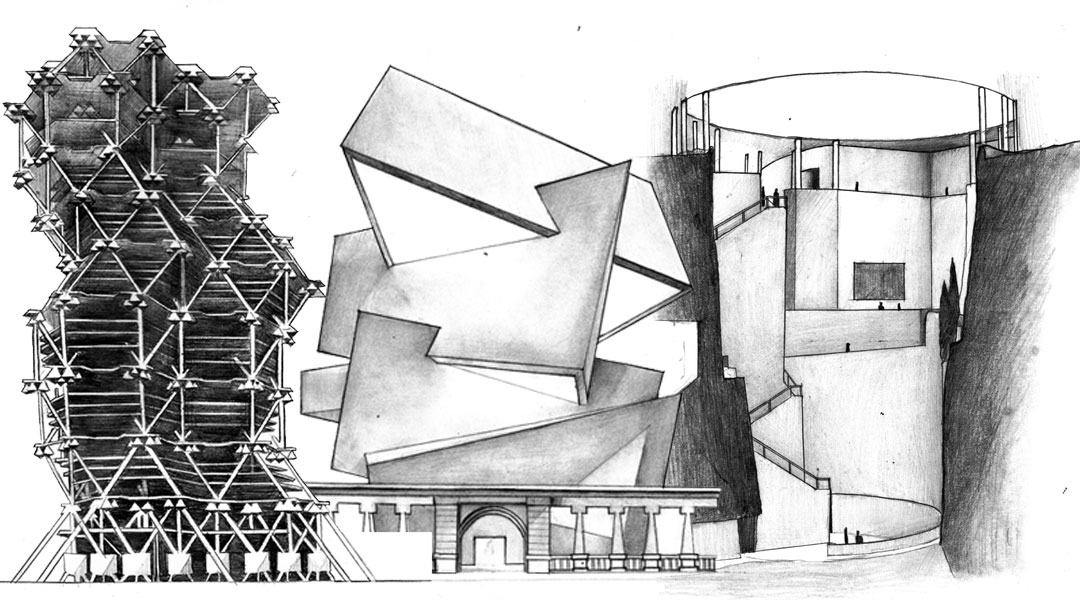
Back To The Drawing Board: 10 Unbuilt projects by famous architects
The odds are not always in the architects’ favor, and not all designs make it from the drawing board to reality. Due to the lack of funding or simply a change of heart on either the client’s or the designer’s side, here are 10 unbuilt projects by famous architects.
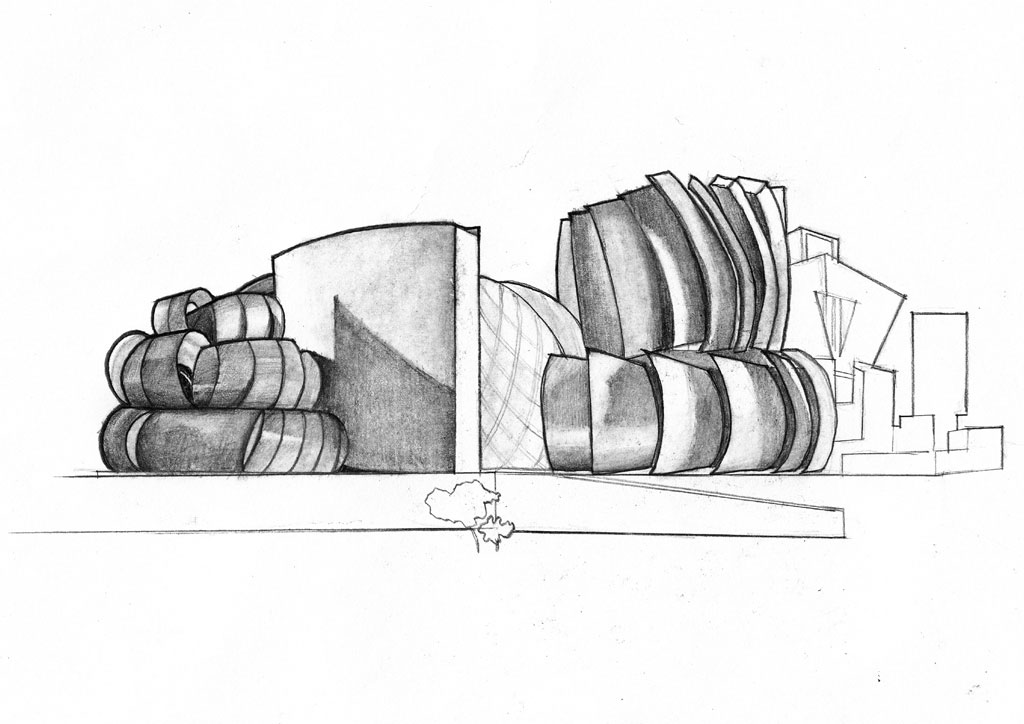
1 | Museum of Tolerance
When the Museum of Tolerance, a multimedia museum based in Los Angeles decided they wanted to open a branch in Jerusalem, they chose this love-to-hate, hate-to-love Pritzker laureate for the job. For the site, they picked the thousand-year-old Mamilla cemetery, a sacred Muslim burial site, where famed Muslim scholars and Islamic saints rest. The controversy heated up even more when the architect revealed his design, which some observers found too ostentatious, a gross misrepresentation of the value it was meant to represent. Despite all the hullaballoo, the project was given the green light by the Israeli authorities, with the condition that it be redesigned. Our architect, Frank Gehry, quit, and someone else handled the redesign.
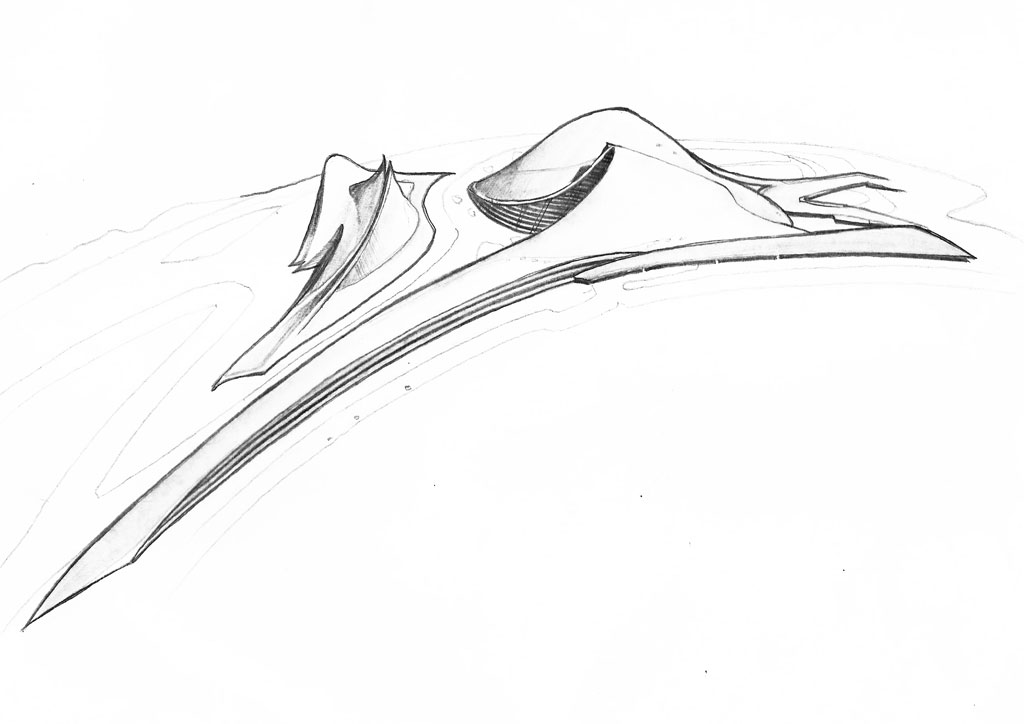
2 | Dubai Opera House
Fans will immediately recognize the sinuous curves and organic forms that characterize this architect’s works. The 2500-seat Dubai Opera House was to have been an architectural showpiece among the residential and commercial developments planned for the seven artificial islands that make up the suspended Lagoons development in Dubai. After many delays, the project, said to have been inspired by the gentle contours of sand dunes, was canceled along with many other fantastical projects our architect, Zaha Hadid, penned for Dubai.
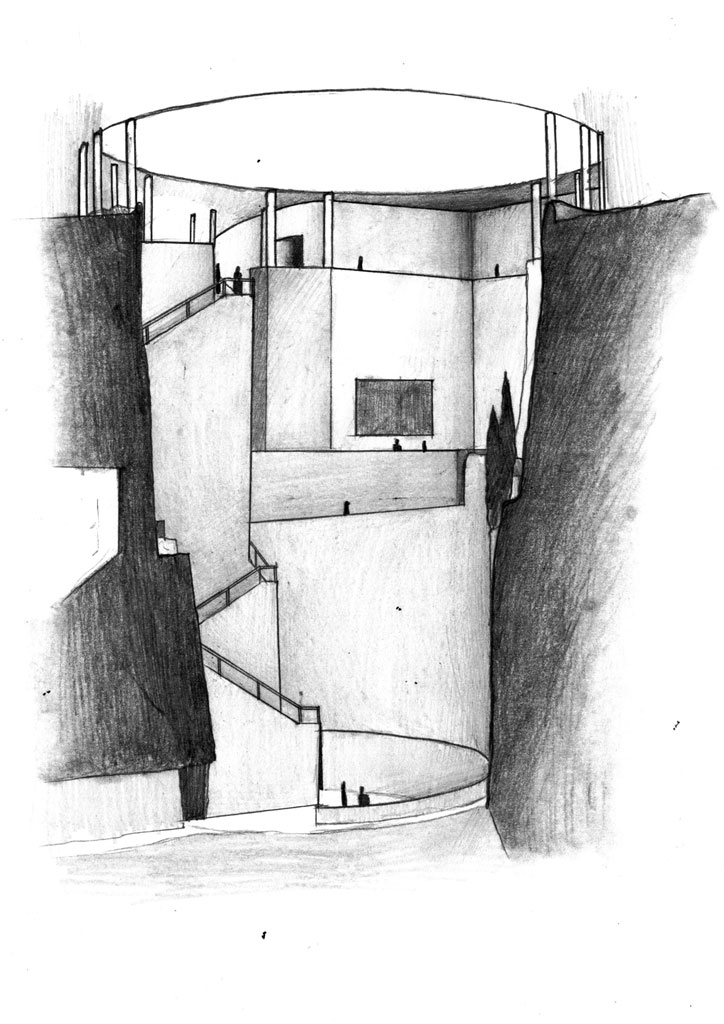
3 | Guggenheim Salzburg
A branch of the Guggenheim Museum was once planned for the city of Salzburg, Austria, and a competition held for its design. The winning entry by Hans Hollein, a Pritzker laureate architect, presented an arresting concept: nestling one of the world’s most prestigious art galleries inside the heart of a rock formation, the Mönchsberg. It was essentially a museum with no façade, its subterranean chambers lit by a vast skylight system. It also pays homage to the original Guggenheim with a 150-foot, funnel-shaped rotunda echoing that of Frank Lloyd Wright’s in New York. Sadly, this project did not see fruition.
READ MORE: Here’s how 5 architects designed their first mark in architecture

4 | Manhattan Dome
R. Buckminster Fuller is famous for his visionary and futuristic projects and this is one of his famous ones. He proposed a two-mile-wide geodesic dome over the area of Midtown Manhattan, capable of allowing weather control as well as reducing the amount of air pollution. The dome would keep temperatures at a moderate level, enabling savings in cooling and heating costs for the inhabitants inside. The success of the dome idea, said our architect, would depend on the choice of material. Although there were no takers, our architect felt his idea would someday be built and that the construction costs, said to be prohibitive at the time, would be offset by the energy savings.

5 | The Spiral
Commissioned by the Victoria and Albert Museum as a modern extension, this ceramic-tiled structure that was said to resemble a pile of squashed boxes instantly stirred an impassioned debate between London traditionalists and others who wished London to welcome the entry of avant-garde architecture. It was eventually granted building permission, but the project had trouble securing funding. In 2004, eight years after the winning entrant was chosen, the project was officially canceled. Our architect, Daniel Libeskind, says: “You know, it’s funny… a lot of people in America say, ‘When I went to London I looked for the Spiral.’ Well, it hasn’t been built yet. The irony is that it has been around; people refer to it and relate to it. The only thing that is missing is the building.”
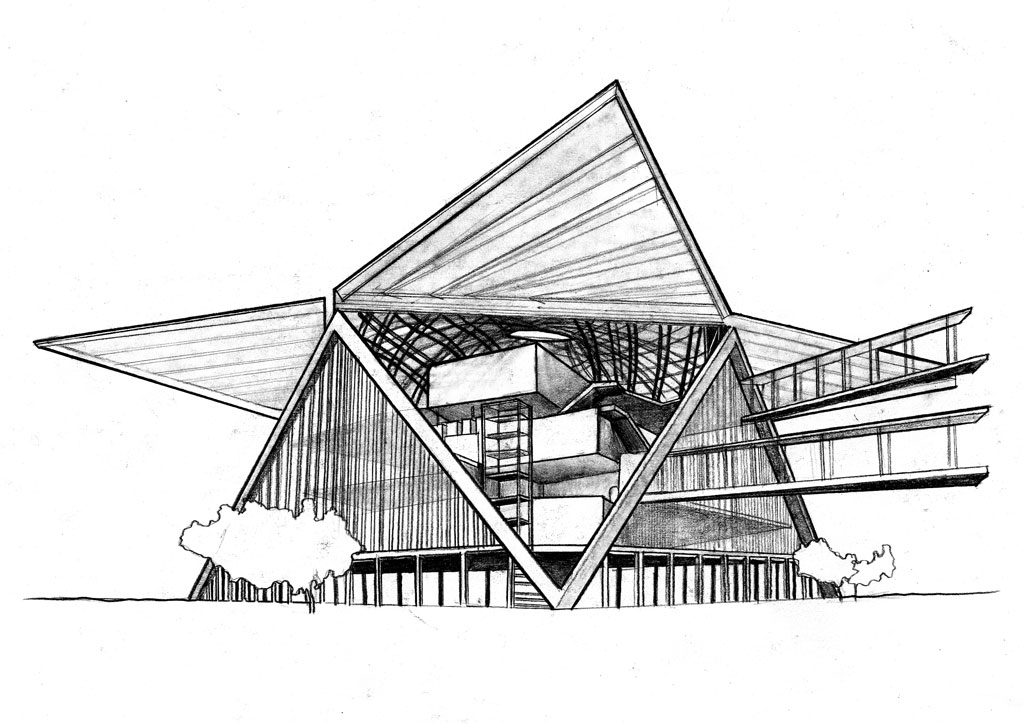
6 | M+ Museum
An unused shortlisted design for a visual arts museum in the developing West Kowloon Cultural District in Hong Kong, this unique proposal by our Pritzker laureate, Shigeru Ban, has a pentagonal structure with five triangular glass façades that open and close like windows. Viewed from above, the structure forms a five-pointed star, a subtle reference to Hong Kong’s eastern location. The open-and-close façade scheme was pursued in order to allow the public to enter the museum freely, lessen dependence on air-conditioning, and to blur the boundaries of indoor and outdoor space. To capture the multi-cultural identity of Hong Kong, the architect made use of a fusion of modern and natural materials like carbon fiber and bamboo in his design. The scheme, however, lost to the winning design of Herzog and Meuron.
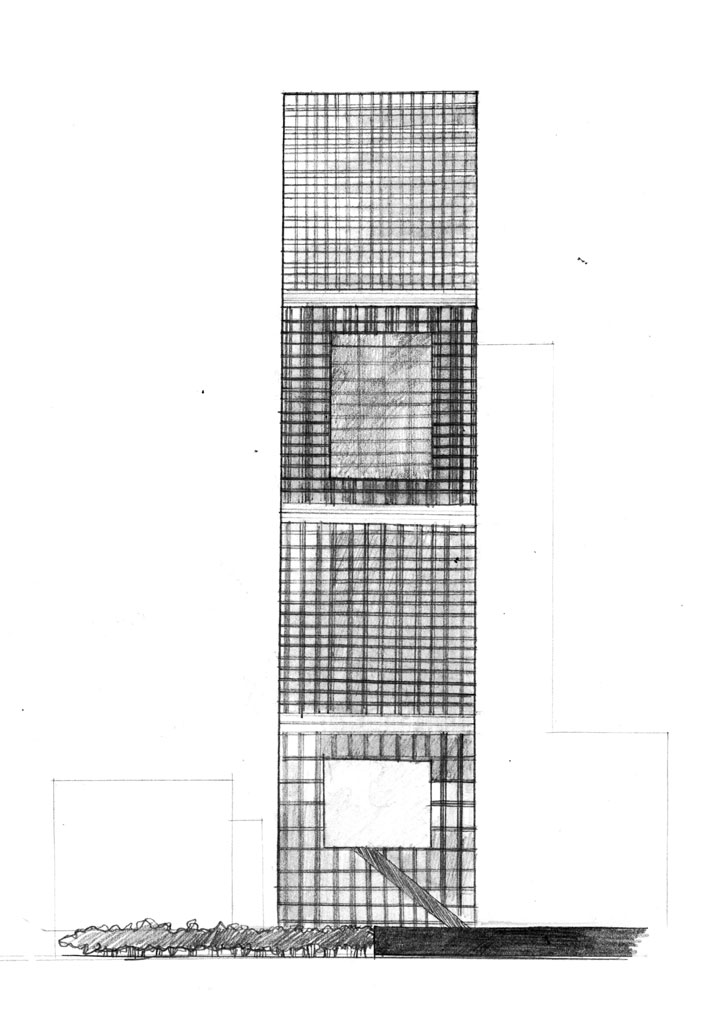
7 | Signal Tower
Jean Nouvel was the winner of a design competition for a new skyscraper in the La Défense neighborhood of Paris. His winning scheme for the Signal Tower project has four boxes piled atop each other with large atria that form huge ‘windows’ opening up to different views of the city. Approved for construction in 2008, the project met its demise in 2010 when investors feared economic uncertainties. The architect, a Pritzker laureate, said that the project would restart when the economy improves, but he has since abandoned plans.
READ MORE: Playing Favorites: 5 architects and their favorite materials
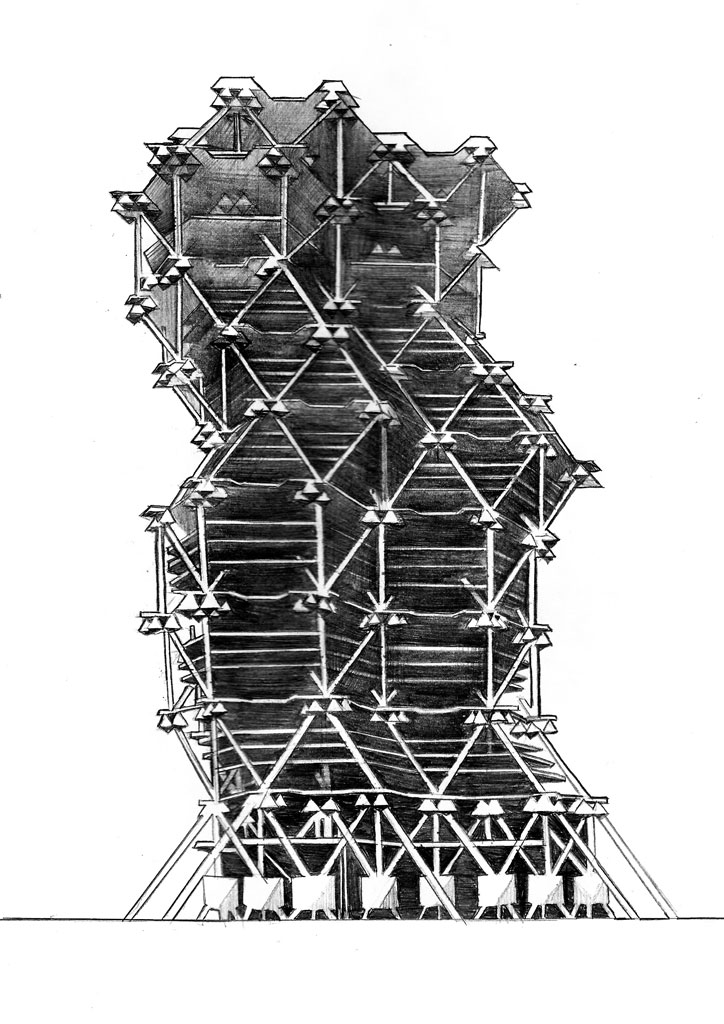
8 | City Tower
The City Tower project was developed by Louis Khan in partnership with his architect-assistant (and second wife) for the city of Philadelphia, Pennsylvania. The architect had always wanted to develop a structural design worthy ‘to be exposed,’ and heavily criticized the design of fellow architect Mies van der Rohe’s Seagram Building for lack of structural clarity. What he came up with is a futuristic-looking office tower with a tetrahedron structural base. Floorplates pile up on each other in a zigzag shape with a ‘permanent’ scaffolding of aluminum louvers, and oversized structural joints or ‘Hollow Capitals’ make up the structural expression of the tower. Despite not having been built, the City Tower’s bold ideas and proposed innovations have influenced a lot of architects such as Renzo Piano (who once worked in our architect’s office), Richard Rogers, and Norman Foster, among others.
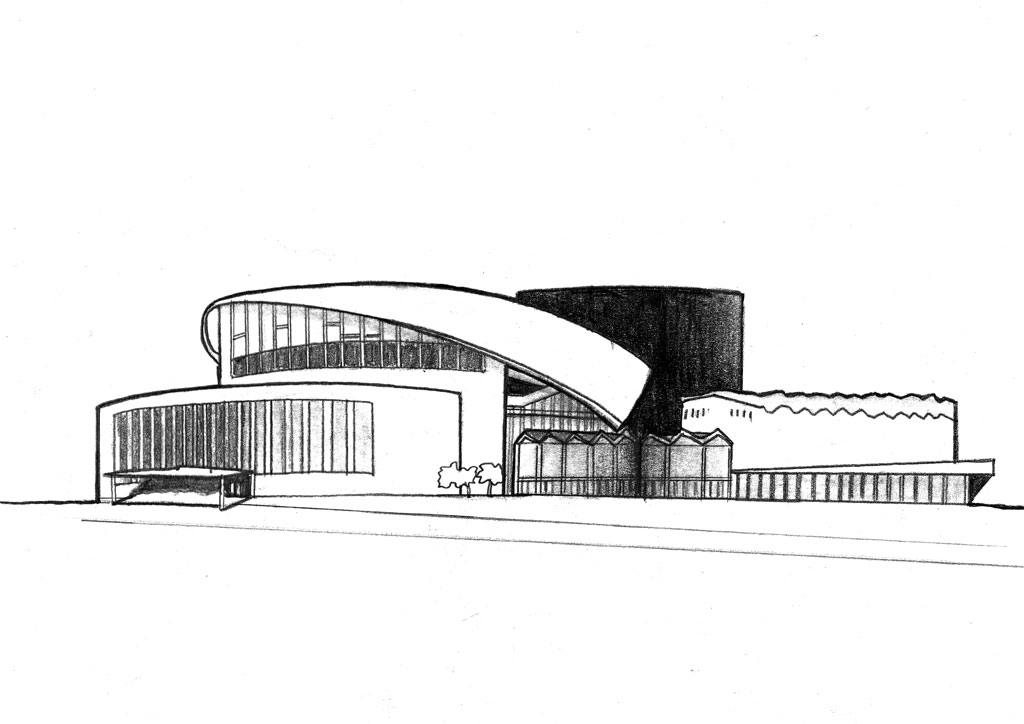
9 | Rizal Memorial Theater
Another victim of fund deficiency, the Rizal Memorial Theater was meant to be the centerpiece of the planned Rizal Memorial Cultural Complex, which included a national library and a national museum intended for completion by June 19, 1961. However, the funds raised were sufficient only for the national library ready for Rizal’s birth centennial. Juan Nakpil, our National Artist for Architecture, successfully reincarnated the design for another project of his in the Makati Commercial Center, The Rizal Theater. Sadly, this iconic structure was demolished in the late 90s, its lot now occupied by the Makati Shangri-La Hotel.
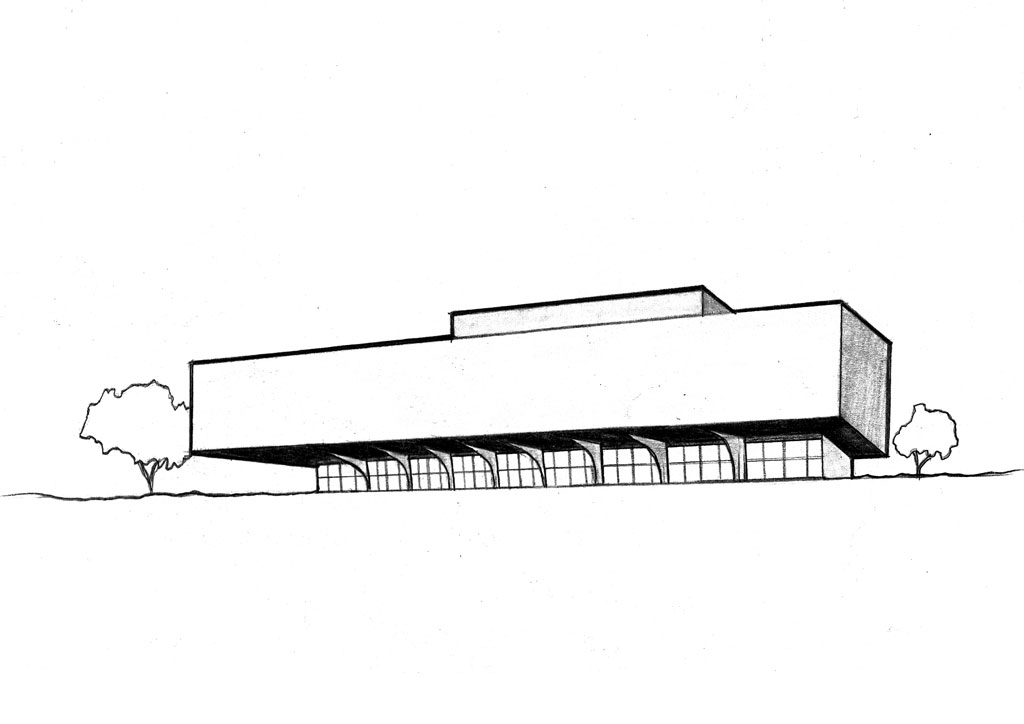
10 | Philippine-American Friendship Center
The reader will probably argue that this structure hardly belongs on this list as it has been built. But no! The design rendered here is not that of the CCP Main Theater, but of the unbuilt Philippine-American Friendship Center designed by Leandro Locsin. One could very well be the doppelganger of the other. The difference between the built and unbuilt structures is that the CCP is larger and elevated from the ground, to meet the demands of its function and to the seaside location. The story of how the Friendship Center design evolved into that of the CCP revolves around Imelda Marcos. She was determined to build a national theater and convinced the proponents of the Friendship Center to relocate to the newly reclaimed portion of Manila Bay and to have the architect redevelop the design for its new role.
This article was first published in BluPrint Volume 4 2014. Edits were made for BluPrint online.
Illustrated by Patricia Rico
READ MORE: For Whom the Bell Tolls: PH heritage landmarks left in ruins


